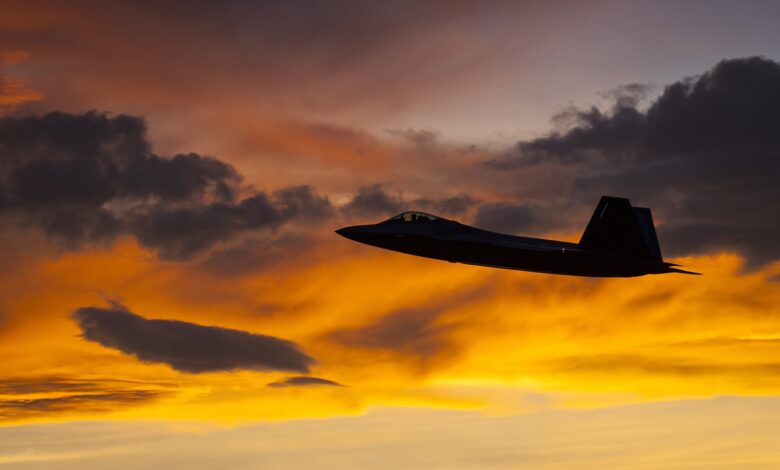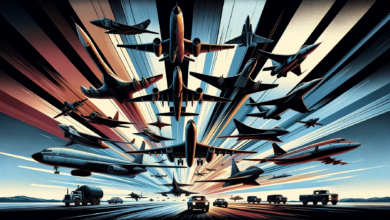Why is the F-22 Raptor being Retired?

In the world of aviation and military prowess, the F-22 Raptor has long been a symbol of American air superiority. As we delve into the story of its retirement, we embark on a journey that intertwines technological advancements, strategic shifts, and the evolution of aerial warfare.
The Dawn of the Raptor: A Revolutionary Fighter
Introduced in the late 20th century, the F-22 Raptor was a marvel of engineering and military technology. Developed by Lockheed Martin, it was designed to be the pinnacle of air superiority fighters. With stealth capabilities, advanced avionics, and unparalleled maneuverability, the Raptor was a leap forward from its predecessors. It was the first fifth-generation fighter, incorporating features that made it virtually invisible to enemy radar and capable of incredible aerial feats.
The F-22’s role was clear from the onset: to establish and maintain air dominance. Its combination of speed, agility, and stealth, along with its advanced weaponry, made it a formidable opponent. The Raptor could engage targets at long ranges without being detected and had the ability to outmaneuver any existing adversary aircraft.
Operational Excellence and Challenges
In its operational lifespan, the F-22 demonstrated exceptional performance. It participated in various exercises and operations, showcasing its capabilities to dominate the skies. However, despite its technological advancements, the F-22 faced several challenges.
One significant issue was cost. The F-22 was one of the most expensive fighter jets ever made, with a high price tag for both acquisition and maintenance. This factor alone made the program a subject of intense debate and scrutiny within the U.S. Department of Defense and Congress.
Furthermore, the rapid pace of technological change in the 21st century meant that some of the Raptor’s systems quickly became outdated. Upgrades were necessary, but they added to the already high operational costs.
The Shift in Global Warfare and Strategy
As the years passed, the nature of global conflicts and military strategy evolved. The threats faced by the United States and its allies were no longer just from other state actors with advanced air forces. Non-state actors, asymmetric warfare, and the rise of cyber and space domains began to reshape the landscape of military engagements.
This shift necessitated a reevaluation of defense spending and resource allocation. The U.S. military began to focus more on versatile platforms capable of multi-role operations, including ground attack and electronic warfare, in addition to air superiority. This change in focus was a key factor in the decision-making process regarding the future of the F-22 program.
The Development of Next-Generation Fighters
Parallel to these strategic shifts was the development of new, more advanced fighter aircraft. The F-35 Lightning II, a multi-role, fifth-generation fighter, was designed to complement and eventually replace the F-22. The F-35 offered greater versatility, with capabilities suited for air-to-air, air-to-ground, electronic warfare, and intelligence, surveillance, and reconnaissance missions.
The introduction of the F-35, along with advancements in drone technology and other unmanned aerial systems, signaled a new era in aerial warfare – one where the requirements were drastically different from when the F-22 was conceived.
The Decision to Retire the Raptor
The culmination of these factors – high operational costs, evolving global threats, strategic shifts, and the advent of newer, more versatile aircraft – led to the difficult decision to retire the F-22 Raptor.
While the Raptor’s retirement marked the end of an era, it also symbolized the progression of military aviation. The lessons learned from the F-22 program have been invaluable in shaping the future of aerial combat. The technological innovations, the understanding of stealth capabilities, and the operational experiences gained from the Raptor have been instrumental in developing next-generation fighters.
Legacy and Impact
The F-22 Raptor will always be remembered as a groundbreaking aircraft that pushed the boundaries of military aviation. Its legacy lies not just in its operational achievements but also in how it paved the way for future advancements in fighter technology.
As the last of the Raptors are phased out, they leave behind a storied history and a wealth of knowledge. The story of the F-22 is not just about a single aircraft; it’s about the evolution of air power, the changing nature of warfare, and the relentless pursuit of technological excellence.
In conclusion, the retirement of the F-22 Raptor marks a significant moment in military aviation history. It represents both an end and a beginning – the end of one of the most advanced fighters of its time and the beginning of a new chapter in aerial warfare, where adaptability, multi-domain capabilities, and next-generation technology take center stage.
Own a Piece of Air Superiority History
In the world of military aviation, the F-22A Raptor stands as a symbol of cutting-edge technology and air dominance. Now, you can own a part of this legacy with this 1/72 scale premium diecast model of the U.S. Air Force Lockheed Martin F-22A Raptor.

This premium model is not just a mere replica; it’s a testament to the Raptor’s unmatched prowess:
- Diecast Metal Construction: Crafted primarily from metal with minimal use of plastic, offering durability and a realistic feel.
- Exceptional Detailing: Professionally painted, this model showcases intricate detailing that brings the F-22A Raptor to life.
- Detachable Landing Gear: Customize the display with or without the landing gear, depending on your preference.
- Attachable Armament: Experience the true might of the Raptor with attachable armaments, adding an extra layer of authenticity.
- Display Stand Included: Comes with a sleek display stand, making it a striking addition to any collection or as a stand-alone showpiece.
With a wingspan of 18.5cm (7.2″) and a nose-to-tail length of 26.5cm (10.4″), this model captures the essence of the F-22A Raptor’s formidable presence.
Whether you’re a seasoned collector, a military enthusiast, or simply appreciate the art of aviation, this F-22A Raptor diecast model is a must-have. It’s more than a model; it’s a piece of aerial history. Embrace the opportunity to own a symbol of air superiority today!




